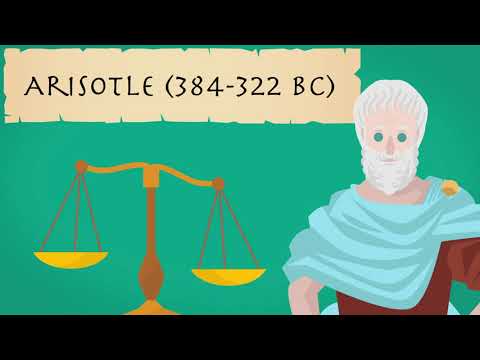
Introduction:
Welcome to this informative article on the topic of “Alternative Dispute Resolution: Resolving Disputes Without Court Intervention.” It is essential to note that the information provided here is educational in nature and should not substitute for professional legal advice. Always consult with reliable sources or seek guidance from legal advisors to ensure accurate and up-to-date information.
Now, let’s dive into the fascinating world of alternative dispute resolution, where conflicts can find resolution outside of the traditional courtroom setting. In this article, we will explore the concept, types, benefits, and limitations of alternative dispute resolution methods, shedding light on how they can help parties involved in disputes reach mutually satisfactory outcomes. So, let’s embark on this enlightening journey together!
📋 Content in this article
An Overview of Alternative Dispute Resolution: Resolving Disputes Outside the Courtroom
An Overview of Alternative Dispute Resolution: Resolving Disputes Without Court Intervention
In the legal system, disputes are an inevitable aspect of human interaction. When conflicts arise, parties traditionally turn to the courts to resolve their issues. However, litigation can be time-consuming, expensive, and emotionally draining. As a result, many individuals and businesses are turning to alternative dispute resolution (ADR) methods to resolve their disputes outside the courtroom.
What is Alternative Dispute Resolution (ADR)?
ADR refers to a set of processes used to resolve conflicts without the need for court intervention. These processes are generally quicker, more cost-effective, and provide parties with more control over the outcome compared to traditional litigation. ADR methods include negotiation, mediation, arbitration, and collaborative law.
1. Negotiation:
Negotiation is a voluntary process where parties attempt to reach a mutually acceptable agreement through direct communication. This method allows the parties involved to have direct control over the outcome and can be conducted informally or with the assistance of attorneys.
2. Mediation:
Mediation involves the use of a neutral third party, known as a mediator, who facilitates communication between the parties and assists them in reaching a resolution. The mediator does not make decisions but instead helps the parties explore options and find common ground. Mediation is a flexible process and can be tailored to meet the unique needs of the parties involved.
3. Arbitration:
Arbitration is a more formal ADR method where parties present their case to a neutral third party known as an arbitrator or panel of arbitrators. The arbitrator(s) then render a decision, which may be binding or non-binding depending on the agreement of the parties. Arbitration can be less formal than traditional litigation but still provides a resolution that is enforceable by law.
4. Collaborative Law:
Collaborative law is a relatively new approach to resolving disputes where
Exploring Alternative Dispute Resolution Methods: Understanding Commonly Used Methods for Resolving Disputes Without Going to Court
Exploring Alternative Dispute Resolution Methods: Understanding Commonly Used Methods for Resolving Disputes Without Going to Court
In today’s legal landscape, there are various ways to resolve disputes without the need for court intervention. These methods, collectively known as alternative dispute resolution (ADR), are designed to provide parties with a more efficient and cost-effective means of resolving their conflicts. this article, we will explore some of the commonly used ADR methods and their benefits.
1. Mediation:
Mediation is a voluntary and confidential process where a neutral third party, known as a mediator, assists the parties in reaching a mutually acceptable resolution. The mediator does not make decisions but facilitates communication and helps the parties explore potential solutions. Mediation allows for more control over the outcome and encourages cooperation between the parties. It is commonly used in family law disputes, commercial disputes, and workplace conflicts.
2. Arbitration:
Arbitration is a more formal ADR method where an impartial third party, called an arbitrator, listens to the arguments and evidence presented by both sides and makes a legally binding decision. Unlike mediation, arbitration results in a final resolution that is enforceable in court. It is often used in commercial disputes, construction matters, and labor disputes. Arbitration offers a more streamlined process compared to litigation, with a focus on efficiency and expertise.
3. Negotiation:
Negotiation is the most informal ADR method, and it involves direct communication between the parties to resolve their differences. It can take place before or during litigation or even before any legal action is initiated. Negotiation allows for maximum flexibility and control over the outcome as the parties have the opportunity to craft their own agreement. It is often used in personal injury cases, contract disputes, and employment matters.
4. Collaborative Law:
Collaborative law is a relatively new ADR method that specifically focuses on family law disputes.
Title: Alternative Dispute Resolution: Resolving Disputes Without Court Intervention
Introduction:
Alternative Dispute Resolution (ADR) refers to a set of methods used to resolve legal disputes outside of traditional court processes. As an expert in US law, it is crucial to stay current on the topic of ADR, given its growing importance in modern legal practice. In this article, we will explore the significance of staying informed about ADR and highlight key points regarding its various forms and benefits. However, readers are strongly encouraged to verify and cross-reference the information presented here, as laws and regulations may vary based on jurisdiction and can change over time.
Understanding Alternative Dispute Resolution:
1. ADR Methods:
Benefits of Alternative Dispute Resolution:
1. Efficiency:
ADR processes are typically faster than traditional litigation, which can be time-consuming due to court backlogs and procedural complexities. Parties involved in ADR have more control over the process and can often resolve disputes more expeditiously.
2. Cost-Effectiveness:
Compared to court proceedings, ADR methods are generally more cost-effective. Litigation involves multiple court appearances, formal procedures, and attorney fees.
